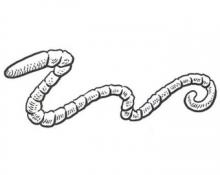Neonicotinoid insecticide residues in surface water and soil associated with commercial maize (corn) fields in Southwestern Ontario
Neonicotinoid insecticides have come under scrutiny for their potential unintended effects on non-target organisms, particularly pollinators in agro-ecosystems. As part of a larger study of neonicotinoid residues associated with maize (corn) production, 76 water samples within or around the perimeter of 18 commercial maize fields and neighbouring apiaries were collected in 5 maize-producing counties of southwestern Ontario. Residues of clothianidin (mean = 2.28, max. = 43.60 ng/mL) and thiamethoxam (mean = 1.12, max. = 16.50 ng/mL) were detected in 100 and 98.7%of the water samples tested, respectively. The concentration of total neonicotinoid residues in water within maize fields increased six-fold during the first five weeks after planting, and returned to pre-plant levels seven weeks after planting. However, concentrations in water sampled from outside the fields were similar throughout the sampling period. Soil samples from the top 5 cm of the soil profile were also collected in these fields before and immediately following planting. The mean total neonicotinoid residue was 4.02 (range 0.07 to 20.30) ng/g, for samples taken before planting, and 9.94 (range 0.53 to 38.98) ng/g, for those taken immediately after planting. Two soil samples collected from within an conservation area contained detectable (0.03 and 0.11 ng/g) concentrations of clothianidin. Of three drifted snow samples taken, the drift stratum containing the most wind-scoured soil had 0.16 and 0.20 ng/mL mainly clothianidin in the melted snow. The concentration was at the limit of detection (0.02 ng/mL) taken across the entire vertical profile. Our results suggest that neonicotinoids may move off-target by wind erosion of contaminated soil. These results are informative to risk assessment models for other non-target species in maize agro-ecosytems










